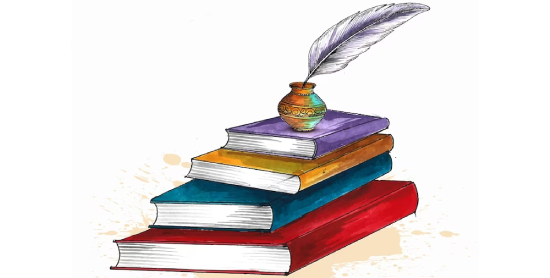Poetry Analysis: How to Analyze Poetry
Analyzing poetry requires a keen understanding of its intricate elements, enabling readers to delve into the poet’s intentions and the deeper meanings within the verses. Start by examining the poem’s structure, considering its form, rhyme scheme, and meter. This lays the foundation for understanding how the poet crafted their work.
Next, focus on the language and imagery employed. Uncover the significance of metaphors, similes, and other literary devices. Pay attention to the choice of words and their connotations, as poets often use language to evoke specific emotions or create vivid mental images.
Explore the thematic elements of the poem. Identify recurring motifs or symbols and consider their potential meanings. Poets often use symbolism to convey broader themes or commentary on the human experience.

Consider the tone and mood of the poem. The poet’s attitude towards the subject matter can greatly impact the reader’s interpretation. Determine whether the tone is reflective, celebratory, melancholic, or any combination thereof. This, coupled with the mood, contributes to the overall emotional impact of the poem.
Examine the use of sound devices, such as alliteration, assonance, and onomatopoeia. These elements contribute to the poem’s auditory appeal and can underscore specific themes or emotions.
Context is crucial in poetry analysis. Investigate the historical, cultural, or biographical background of the poet, as well as the time period in which the poem was written. This contextual understanding can shed light on the poet’s motivations and influences.
In conclusion, a thorough poetry analysis involves scrutinizing the structure, language, imagery, themes, tone, and sound devices within the poem. By unraveling these elements, readers can gain a deeper appreciation of the poet’s artistry and the nuanced messages embedded in the verses.
What is poetry analysis?
Poetry analysis involves analyzing how elements such as rhyme, meter, theme, symbols, and structure influence the meaning and effect of the poem. Poetry analysis begins with reading the poem in its entirety to get a general understanding of what the poet is saying. After that, the reading should be repeated to observe how each line or stanza interacts with the other. This includes figuring out how rhyme and meter affect storyline and meaning. In addition, the analyst must also find out what the poet conveys about the main theme. When analyzing a poem, it is important to pay attention to its structure. Structure is the way in which the stanzas are organized in a poem. Usually, this will be of some form such as a sonnet or rhyme. This structure provides clues as to how each stanza relates to one another and how that affects the overall meaning of the poem. In addition, the analyst must also look at the symbolism used by the poets in their poetry. Symbolism is the way in which the poet uses images or objects to represent certain ideas or feelings. By observing the symbolism used by poets, analysts can better understand their intent and purpose when writing them. After all the elements have been carefully considered, the analyst must summarize their findings into a well-structured essay. This essay should focus on how artistic and functional elements work together to provide the reader with an overall meaning. This essay must also provide a subjective interpretation of what the poet conveys through their poetry.
Need help WRITING RESUMES?
Just submit your requirements and choose a resume writer. That’s all we need to write a winning resume for you.
How to select poems for analysis?
The selection of poems for analysis is an important step in the development of literary education. First, choose poems that you like or are interested in. This will help you stay interested in the analysis. Second, pay attention to famous poets or movements in literature, such as Romanticism or Modernism. Choose pieces that have depth and variety of styles. It is also important to consider the context of the time and place the poem was written, as this can influence its interpretation. Remember that the selected poems should have the potential for a variety of analysis, including language devices, themes, and symbolism. Focus on expressing your own ideas and feelings, as a personal approach to the work will make the analysis more interesting and individualized.
Outline of Poetry Analysis

Introduction a. Identification of the poem to be analyzed, including title, author, and year of publication b. A brief description of the theme and content of the poem c. Background information about the author or relevant social context d. Thesis statement: This analysis will show that … 1. Identify the type of poetry: Is it a sonnet, pantun, haiku, or some other form? 2. Determine the theme and goal: What does the poet want to achieve with this poem? What did the poet want to convey about his topic? 3. Structural analysis: How is the poem formally organized? Is there rhyme, alliteration, or some other form of rhetoric used to enhance its effectiveness? 4. Content analysis: What is the meaning and message implied behind the words and phrases in the poem? How do words build mental pictures for readers? How do connotation and denotation affect the meaning of poetry? 5. Stylistic analysis: How does the use of language reflect the theme and purpose of the poem? How does language style affect the reader’s understanding of the message conveyed by the poet? 6. Analysis of symbolism: Is there any symbolism or metaphor used in the poem to express the theme more deeply?
Tips for poetry analysis
- If possible, choose the poem you want to write. This seems like a pretty simple idea but very relevant. If you have a choice, choose poetry that you enjoy.
- Try reading the poem to a colleague or friend and even just aloud to yourself. This will help find information hidden from sound, and it’s always good to get a second opinion or extra ideas.
- Don’t be afraid to double check the meaning of words and phrases. It’s very important to know how to write a poetry analysis essay and best of all, you can. Some words may have different meanings, cultural references and must-see places if only half certain.
- Check to see if the conclusion has one clear central idea or theme. Don’t include a lot of confusing ideas or conclusions because it will look like you haven’t evaluated the work with focus. To go beyond a simple poetry analysis for high school, try to show how it relates to a wider theme and the outside world.
- Always try to see beyond the words themselves. Hunt for hidden meanings and little clues where to build the picture. Anyone can know how to write poetry but to explore hidden meanings in poetry requires time, skill and a lot of research.
